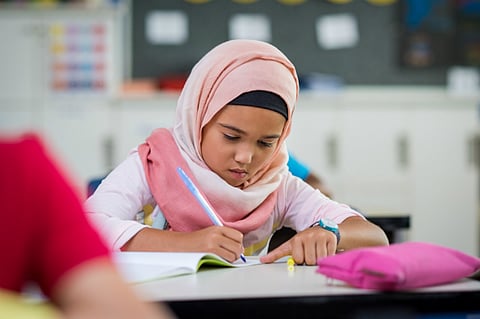
New Delhi- India is a diverse nation, but each group does not have similar access to resources. The analytical report titled 'The State of Muslim Education in India, A Data-Driven Analysis' brings attention to a harsh reality. Despite Muslim children initially enrolling in primary school, there is a concerning trend where they face challenges in completing their education. The report suggests that although there is an initial interest and enrolment at the primary level, a significant number of Muslim children are not able to successfully finish their education.
The report relies on information gathered from the Unified District Information on School Education (UDISE+) and the All-India Survey on Higher Education. Arun C Mehta, who was formerly a Professor and Head of the Educational Management Information System (EMIS) Department at the National Institute of Educational Planning and Administration (NIEPA) in New Delhi, played a key role in formulating this comprehensive report.
The report states that when we look at students who are Muslim and in grades I to XII from 2012-13 to 2021-22, most of them are in the primary level. More than half of the Muslim students are in the primary grades during this entire period. However, what's important to notice is that the percentage of students in the primary level has gone down over the years. It was the highest at 60.64% in 2012-13, but by 2021-22, it has dropped to its lowest point at 52.02%.
The information reveals that after the primary level, the upper primary level is the next most common stage for Muslim students. In 2021-22, about 26.31% of Muslim students were enrolled in the upper primary grades. However, as students move on to secondary education (Grades IX to X) and higher secondary education (Grades XI to XII), the numbers drop. Only 13.27% of Muslim students are in secondary education, and even fewer, 8.40%, are in higher secondary education in 2021-22.
This suggests that not all students who start at the primary level continue their education through the higher grades. The decreasing percentages at higher levels indicate that there might be challenges or problems in the education system that prevent some students, especially Muslim students, from progressing to and completing secondary and higher secondary education. The declining trend in enrollment shares from primary to higher levels indicates challenges in retaining and transitioning students. The data emphasizes that while many Muslim students enroll at the primary level, there are difficulties in keeping them in the education system and helping them move to higher levels.
These trends highlight the importance of improving the education system's efficiency and inclusivity. It is crucial to ensure that all students, including Muslims, have equal opportunities to access and advance in education at all levels. Efforts should focus on addressing barriers that hinder students' progress and promoting a more inclusive and effective education system in India.
Using data from these sources, Arun C Mehta compiled and analyzed information to create a detailed overview of school-going children belonging to the Muslim community across the entire nation. The report covers various aspects of their education, including enrollment rates, transitions between different educational levels, dropout rates, and other relevant indicators. By utilizing data from these reputable education-related surveys, the report aims to provide a thorough understanding of the educational landscape for Muslim students in India, helping identify trends, challenges, and areas that may require improvement in the education system.
This research has calculated some important information that wasn't previously worked out for Muslim children in India. The report looked at things such as enrollment of kids in schools and higher education, as well as how many leave school, move to higher classes, and stay in school. Data was calculated for men and women as well as different states and for the whole country.
Also Read-
You can also join our WhatsApp group to get premium and selected news of The Mooknayak on WhatsApp. Click here to join the WhatsApp group.